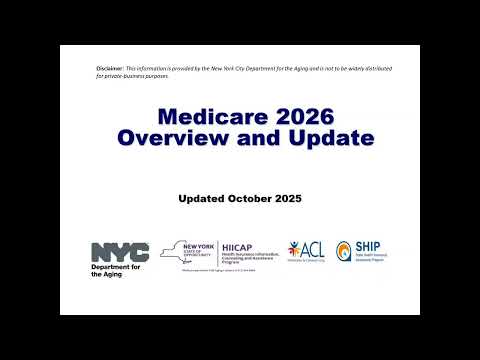
Testimony before the Empire State Development Corporation (ESDC) Regarding the Proposed One Bryant Park Land Use Improvement Project on November 20, 2003
Liz Krueger
July 12, 2010
Good afternoon, I am State Senator Liz Krueger and I represent the 26thSenatorial District, which includes Midtown and the East Side of Manhattan. I want to thank the ESDC for allowing me the opportunity to make a statement regarding a number of concerns that I have with the proposed One Bryant Park Land Use Improvement Project. This project puts several issues into the limelight, such as eminent domain proceedings, corporate subsidies and New York City’s record high commercial vacancy rates.
One primary concern I have regarding this proposal is the use of eminent domain to acquire properties on the basis that the area is “blighted.” In today’s New York Times, the owners of two of the lots slated for condemnation took out a full-page ad opposing this condemnation, and I can certainly understand their objection to the characterization of their properties as a blight on the neighborhood. I know, as everyone in this room knows, that Sixth Avenue and 42nd Street is hardly a blighted neighborhood. I believe the real reason for this condemnation is a conflation on the part of ESDC of low-rise development with blight, which is highly questionable. I believe that we must re-evaluate the usage of eminent domain throughout our City and State, which has increasingly been used in recent years to the benefit of private corporations. The practice of condemning privately owned businesses for a corporation’s gain is not only detrimental to existing businesses, but it raises serious concerns with regard to the original purposes of eminent domain.
Another concern that I have deals with the system of corporate welfare that has consumed our city. The misuse of Liberty Bonds for this project is the most recent example. The Durst Organization and the Bank of America (BoA) have already obtained preliminary approval for $650 million in Liberty Bonds, which will cover 65% of the project costs. Considering that the purpose of Liberty Bonds is to stimulate business throughout New York City, I believe that it is inappropriate for such a large sum of money to go towards one project. New York City must reassess the commonplace usage of discretionary funding and subsidies for corporate retention deals. Time and time again, New York City has given tax breaks and incentives to corporations, such as Merrill Lynch, Paine Webber, Chase Manhattan Bank, Citicorp and Viacom, only to be thanked by mergers and layoffs. Incidentally, the BoA was in a similar situation in the early 1990’s when they asked for $12 million in sales-tax abatements in exchange for a promise to retain 1,700 employees at the World Trade Center. A few years later, the sales-tax deal was terminated when BoA merged with a west coast bank and laid off 800 employees. With regard to the One Bryant Park Project, Durst and BoA will be exempt from paying real property taxes, mortgage recording tax and sales & use taxes from 2008 until 2028. While they will be required to disburse payment in lieu of taxes (PILOT), New York City will lose out on millions of dollars in potential tax money. Many studies have highlighted that this model of corporate welfare and job retention simply does not work. An interesting footnote is that BoA recently merged with FleetBoston. How will this affect the employees that BoA has promised to retain? Will this merger result in layoffs to the New York-based employees of FleetBoston? Will this influx of FleetBoston employees serve to inflate BoA’s employee numbers, while ultimately decreasing the total number of employed New Yorkers? And what will happen with all of the office space that FleetBoston presently utilizes?
I am also concerned because Manhattan presently has unprecedented levels of vacant office space. While, the terrorist attacks of September 11th had an obvious impact upon vacancy rates throughout New York City, vacancy rates had been on the rise for almost a year before. Between the third quarters of 2001 and 2002, the vacancy rate shot up by 55%. According to the September 2003 Colliers Manhattan Office Market Report, the Midtown Class A vacancy rate climbed to 11%. To put that in real numbers, figure that there are about 148.5 million square feet of rentable Class A space in Midtown Manhattan. Over 16 million square feet of that space is presently vacant. With the proposed addition of 2.1 million square feet of space at One Bryant Park, a million square feet will be added to that vacancy rate due to BoA’s rental of only half of the available space. Why are we building more office space when we cannot fill the space that is already available?
One suggestion that I would like to propose to the ESDC is to put more energy into creating affordable housing (which we need), rather than commercial structures in Midtown Manhattan (which we don’t need). Good Jobs New York has put forth an excellent proposal that would charge commercial developers a fee for the usage of Liberty Bonds. At present, housing developers must pay a fee to the City for the privilege of receiving Liberty Bonds and this money goes into a fund that will be used to build more affordable housing. This would show an increased commitment on behalf of the ESDC to address the lack of affordable housing in New York City.
I would also like to emphasize that while the proposed building will be violating certain zoning regulations, it is crucial that the building be up to code for building construction safety standards. One of the critical lessons of 9/11 was that it was not worth working around the code when people’s lives are potentially in danger.
While this statement raises a number of concerns and criticism, I would like to commend the Durst Organization for their fierce commitment to “green” technology. In addition, the public amenities, such as the urban garden, pedestrian passageways and the restoration of the Henry Miller Theater will most certainly have a positive impact upon the Midtown area.
Once again, thank you for the opportunity to testify today.
Share this Article or Press Release
Newsroom
Go to Newsroom


